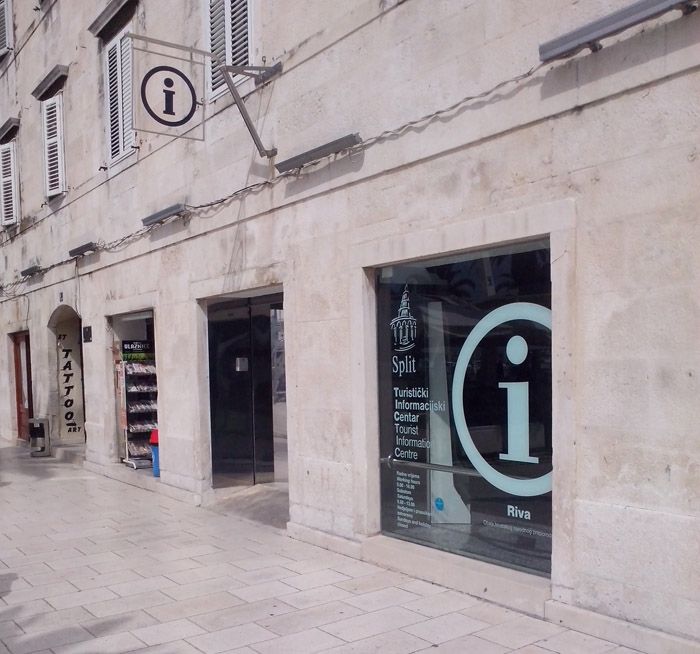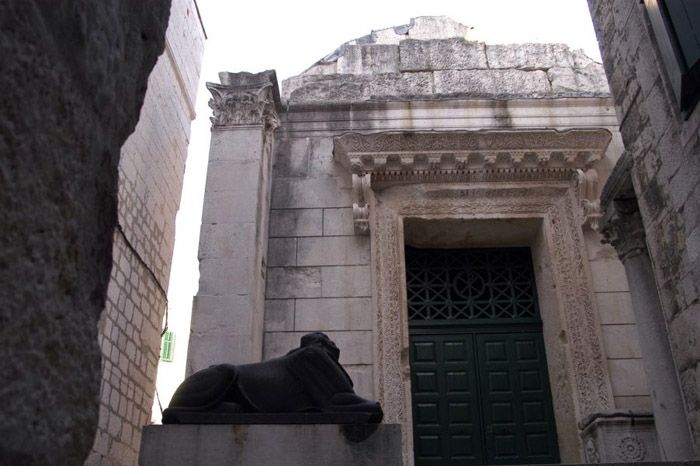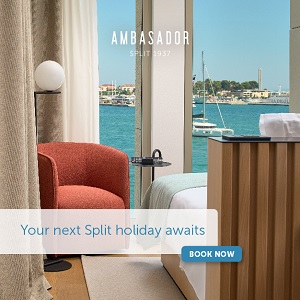Where To Stay In Split (4): A Neighbourhood With The View
Split has many nice views, but sitting anywhere on the south slopes on Marjan gives an oportunity for some real spectacles. Depending on the weather, just an easy hike brings a view that sometimes reaches most of the islands in front of Split, as far as Vis. This, the proximity of park-forest Marjan, just an easy walk to the city center, and the sheer luxury of villas based there, makes the southwest side of Split peninsula a really interesting choice as a vacation base.

These area is divided into few neighbourhoods, locally known as Meje (pron. Maeyae), Zvončac (Zvonchats), and simply Marjan (Maryan). It includes also the area around ACI marina with the newly renovated Western seaside promenade, and former cemetery, now park Sustipan.

As a place to stay, southern Marjan offers not so many possibilities as the old town or Varoš, but it's possible to find a range, from rooms to luxury villas in the residential area. a random search over AirBnB.com for early June gives about 60 facilities, but there are even more not listed. Unlike previously described neighbourhoods, this area is car-friendly, with a lot of places to park right in front of your accommodation, usually with a private parking space. It's easily accessible through Marjan tunnel, but our suggestion would be to leave your car there when going sightseeing, because it's not so easy to find a parking spot in the old town. Unfortunately, there are no hotels around. A few of them might be opened in the future, but right now Marjan Hilton is still under construction, as well as Ambasador, and the former residence of late Yugoslav president Josip Broz Tito was never returned into its original hotel assignation, being still a state-owned residence.

Restaurants are also rare, except for a few in and around the marina, one of the recent additions is very well received Zrno soli (Grain of Salt). It is also the same story with cafés, there are no many of them, but sipping coffee on a West Riva (locally Zapadna obala) is a nice experience, another great view on Split and surrounding mountains. Check out the plaques laid on West Riva, they mark all Split-native Olympic medal bearers.

Marjan itself doesn't give a lot of café oportunities, it's dedicated to different sorts of enjoyment, hiking, rock-climbing, biking, sightseeing, etc. The same kind of nature-bound enjoying provides park Sustipan, just above marina, once a cemetery and coronation site for old Croatian kings. One of the most attractive features are beaches around Marjan - the sea is everywhere very clean, and the most popular beaches like Kaštelet, Ježinac or Bene have nice cafés.

Don't expect much nightlife, this is another residential area, but whenever the weather is fine, West Riva will be packed with by-walkers, and those just enjoying sitting by the sea. Of course, as with Varoš - other, more party friendly areas are easily reachable.

Most tourists believe that there is not so much to see outside of the old town, but south Marjan has a few excellent museum experiences. The best known Split museum, Ivan Meštrović Gallery dedicated to the most famous Croatian sculptor is based there, as well as the adjacent Crikvine Kaštilac, also once owned by Meštrović.

A little bit closer to a city, lies Museum of Croatian Archeological Monuments, with early medieval treasures. Unfortunatelly, its permanent collection is in preparation, but the museum is worth visiting. This area is also a good staring point for a tour of Marjan churches.
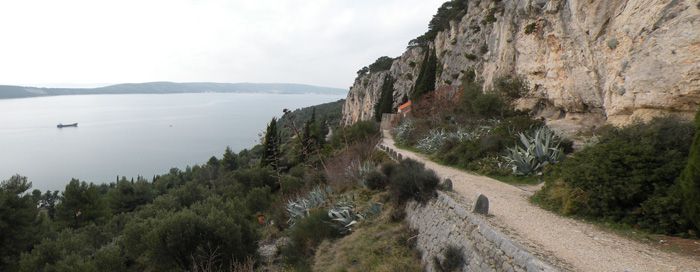
Downsides of south Marjan is not so good public transportation connections with the city center. We have already said that it's not a very good idea to drive to the old town, so walking is probably the best option. It's an easy half-an-hour walk from Meštrović Gallery to Riva. Even though some parts of this area are pretty dark in the night, and Marjan forest is so close, it's pretty safe.
To be continued
PREVIOUSLY IN WHERE TO STAY IN SPLIT
Choose Neighbourhood By Your Needs
Where To Stay In Split (2): City Within The Imperial Palace
There is nothing more logical but to start this series with the very heart of Split, its historical center based in and around Diocletian's Palace. This is where Split was born. We all know the story about Roman emperor Diocletian, and his 1,700 years old palace where he spent his retirement days. For those who expect to see a palace as a building - in Split, the Palace is the city itself.
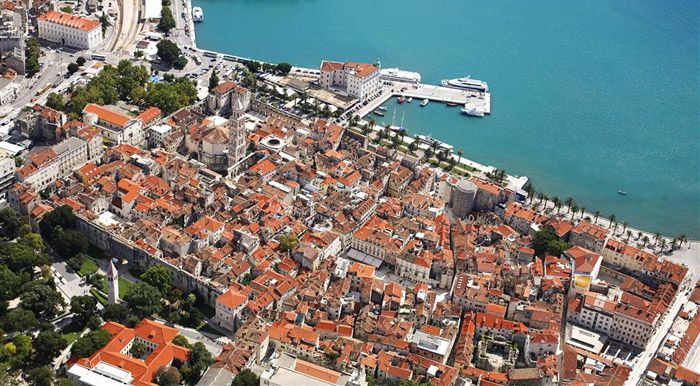
Nowadays, Split's historical core is on UNESCO's list of world historical heritage, earning that status in 1979, even before Venice. It consists of Diocletian's Palace, and medieval (or later) buildings inside the Palace and toward Riva (waterfront) or to the west up to Marmontova street and colonades on Prokurative. Also, the old town includes Riva, the colourful green market, and the area north of Palace, with city Giardino, Art museum complex, and statue of Gregory of Nin, among other things.
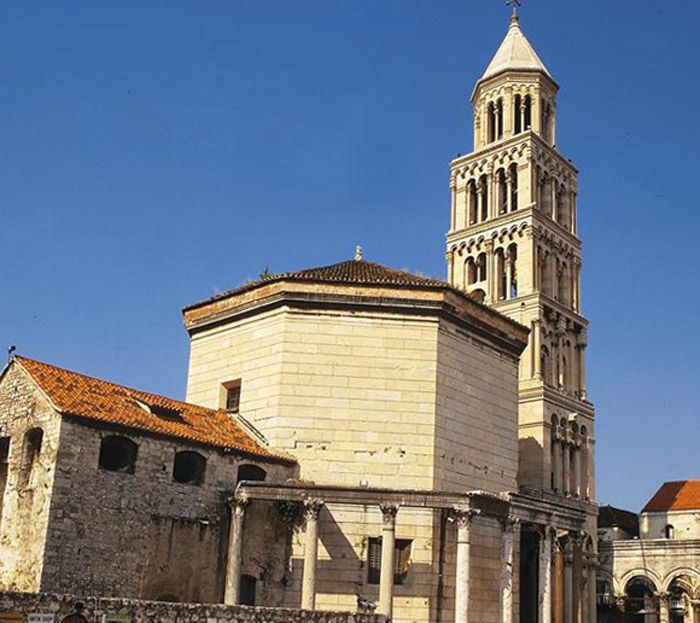
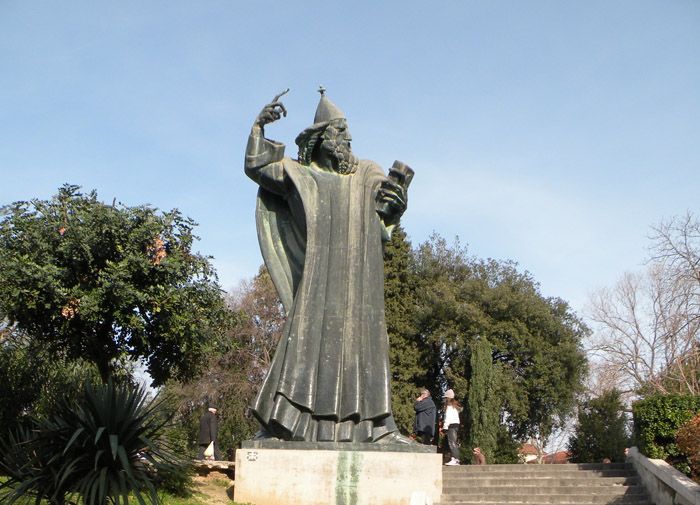
Almost all historical attractions in Split are based in the city's centre, it's a collection of at least Top 10 "what to see" in Split, including Peristil, Palace's substructures, Diocletian's quarter, all main city squares, churches, etc. Also, most of the popular restaurants and cafés are there, like Zinfandel, Uje, No Stress, Dva Tona, Bajamonti, Teak, Tinel, Fro, and many, many others, especially in the main season.
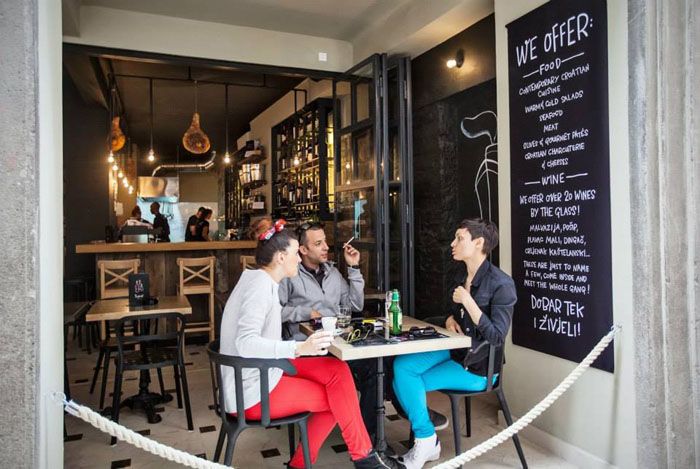
Of course, all this has made the city center the most popular for accommodation, with several boutique hotels like Vestibul, Judita, Peristil, Marmont, and countless apartments and private rooms. Staying in such a historical and important environment usually means higher prices, and it is the case in most venues in Split's center. Still, views of the old city, and close proximity to all the attractions usually means that staying in historical core means value for money.
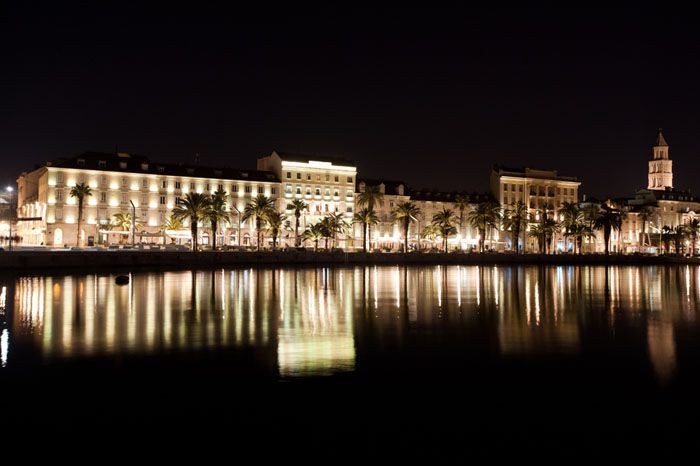
Although it's great to stay in Split's heart, there are also downsides. First, it's not very friendly to those arriving to Split by car, since parking is a chronic problem in this city. Further, in the high season it's possible you won't get a nice, quiet sleep due to a noise from streets, squares, restaurants, bars. Split centre is not the place for a quiet, family vacation, except in some parts, such as near Vestibul. Still, like almost anywhere in the city, it's safe to stroll around even late in the night.
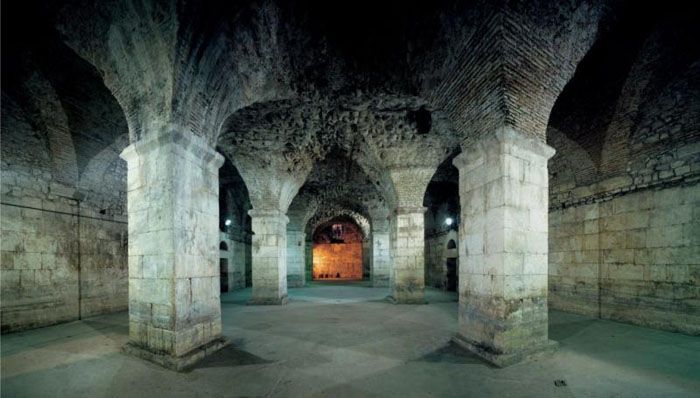
There is another thing any guest should take in account. Split is a historical city, but its full value and beauty is in its life. Even though Diocletian's Palace is a globally important monument, it's also a place where people live. Respect that fact, don't argue too harshly if someone complains about the noise, he or she is probably going to work next morning. If you were in Dubrovnik, you probably didn't see many locals, but Split is very different. Take advantage of of that fact, check out where locals go, and join them, it's usually a good recipe for an even better vacation, including visiting the fishmarket, green market, and sipping coffee on Riva or any given square.
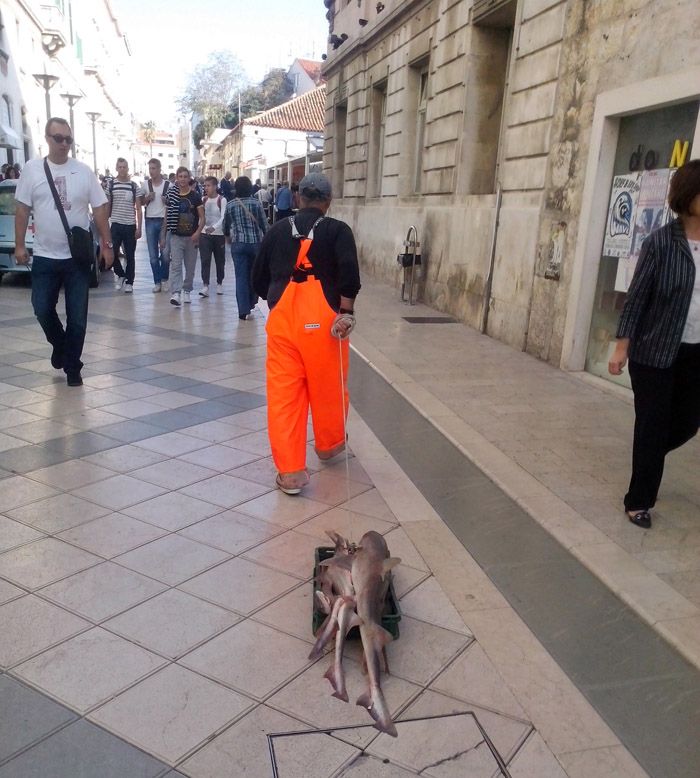
(to be continued)
PREVIOUSLY IN WHERE TO STAY IN SPLIT
Where To Stay In Split (1): Choose Neighbourhood By Your Needs
There are hundreds, even thousands of options where to stay in Split, a variety of hotels, hostels and especially rooms and apartments, and the choice is seemingly endless. However, when it comes to the final decision, when you narrow your selection on Booking.com or Airbnb.com or any other site, one of the main questions is "which neighbourhood to choose". Especially for first time visitors, most of them are complete terra incognita, not to mention sometimes truly unpronouncable names.
Like in any other city, every neighbourhood in Split has its pros and cons, its ups and downs, and reasons why or why not to hang around. In this new Total Split series we will try to give you hints what does it mean when some apartment owner gives you information that they are in Varos, Get, Marjan, Poljud, Bacvice, Radunica... All these parts of Split have their history, their unique atmosphere, different accessibility, or, in short, important reasons for and against. Each one of them will offer you different oportunities for nightlife, a quiet vacation, enjoying history or good food, or to be closer to nature.
For starters, it's good to know that since last year almost whole Split is included in Street View on Google Maps. This way anyone can browse around pretty much any properties offered on booking sites.
To be continued
Left Luggage in Split: Ultimate Guide of Where to Leave Your Bags
February 19, 2021 - Imagine this: You have just arrived by plane to Split, took a transfer to the city, and are supposed to continue the trip further to the islands, or another coastal town. You have several hours to kill, which is a nice chance to do some sightseeing, even now, in the winter time. Or, you might want to have lunch and a glass of wine or beer at a restaurant in Diocletian's Palace. But, what to do with those annoying bags you are carrying around? We'll tell you where you can leave your luggage in Split.
In the area around the Split bus terminal and railway station, just near the ferry port, there are a few luggage storage booths with reasonable prices. Don't be scared or suspicious by their look, as this entire area is awaiting major development in the future.
You can leave your luggage in Split where the shuttle tickets are sold
The first one any passenger coming from the airport will notice is the one where shuttle tickets are sold. This booth is open from 7 am until 9 pm, and price per piece of luggage is 5 kunas for the first hour, and 1.5 kuna for every next hour. Due to its attractive position, this is the most expensive of all four that are open year-round in this area.
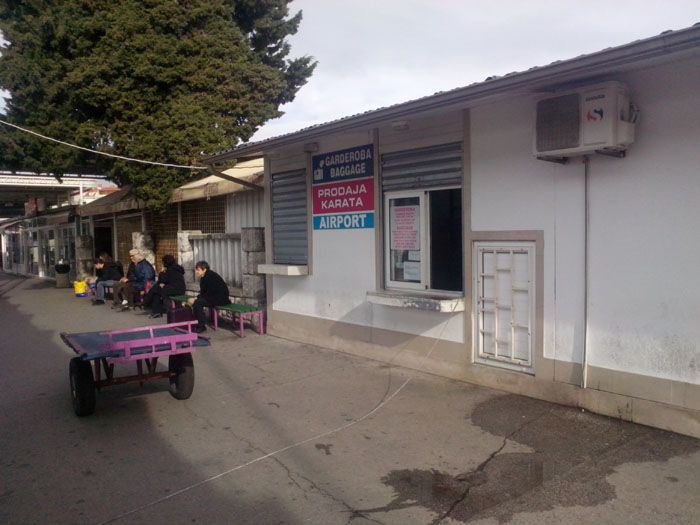
You can leave your luggage in Split in the luggage lockers by the railway station waiting room
Close to that place is the railway station waiting room, with luggage lockers like those you can find anywhere else in the world. The procedure is simple as usual, insert 15 kuna for 24 hour, put the luggage in and take the key with you. The terminal is open from 6 am to 10 pm, which can be good if you have a late night transfer.
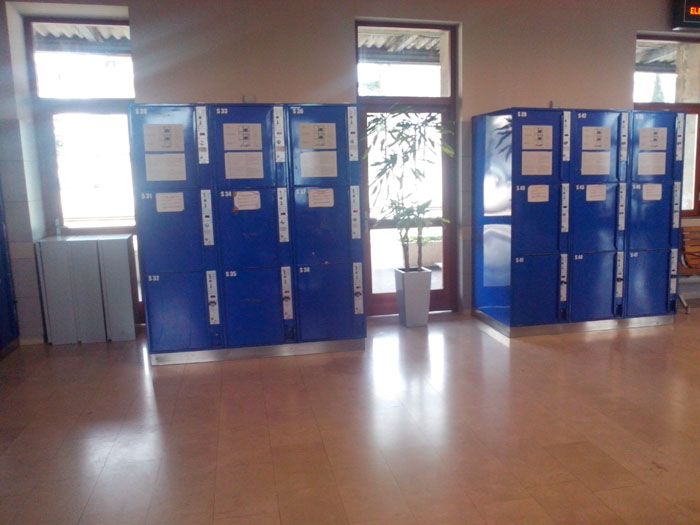
While there are other places to leave your luggage in Split, they are not open throughout the year
Going further north, there are three more storage places, but only two of them work throughout the year. They both have the same working hours, from 7 am to 9 pm during winter, and 6 am to 10 pm in the summer. The price is also the same as in the locker hall - 15 kuna for 24 hours, no matter how long you keep your luggage there.
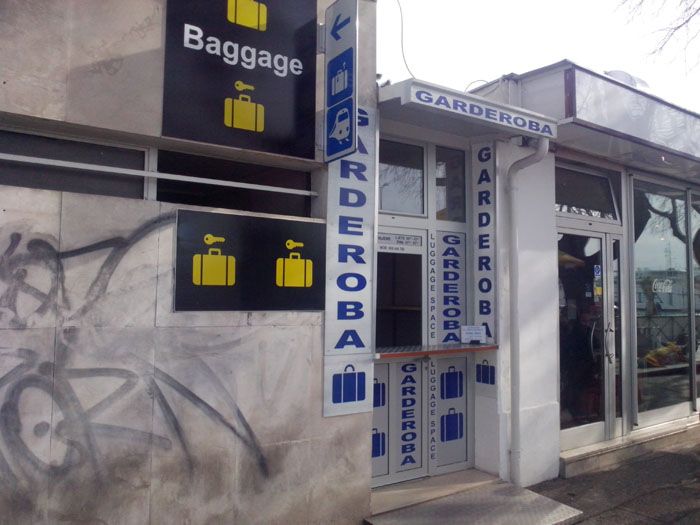
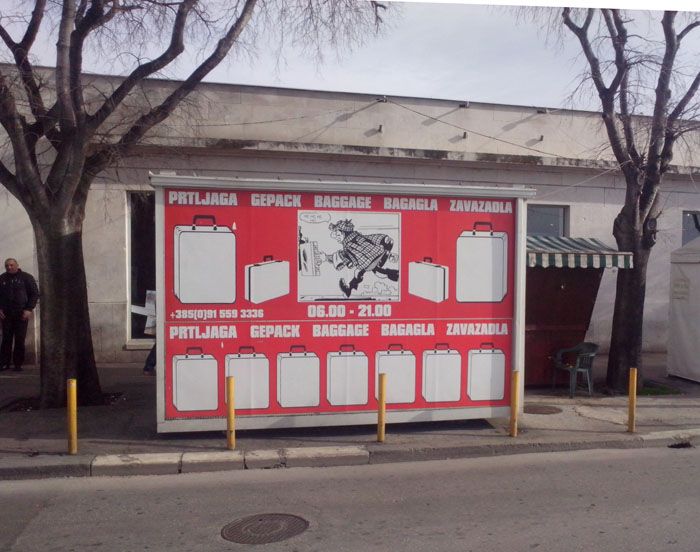
Not so surprisingly, there are no similar places elsewhere in the city, since all the traffic is concentrated in this eastern part of the city port. However, you'll meet an unpleasant surprise if you are planning to leave your bags somewhere closer to the ferries. In the port terminal, there is no luggage storage. Well, something for agencies based there to think about, perhaps.
Learning Dalmatian as a Non-Speaking Croat: Part 1
Me: “Can you help me take something out of my a***?”
Friend: “Are you normal?”
Me: “What? It’s not difficult. It won’t take a minute”
This is how one word changed the whole meaning of a conversation and I have been mocked about it ever since. What I meant was ‘storage room’ however, by adding just one letter to the word, it became a very inappropriate favor to ask for. Nonetheless, I continue to speak my pigeon Croatian without too many misunderstandings… I hope.
My Croatian mother who is fluent in Danish never taught me her language but despite that I have spent every single summer holiday in Croatia since my birth. With my Danish father towing along, all family and friends always spoke English to us. As I child I of course learnt the most important word of all, ‘sladoled’ meaning ice cream and I vividly remember fluttering my eyelashes at my cousin, Ana, signaling an ice-cream licking action and saying sladoled with enthusiasm five times per day.
They say that love grammar is the best way to learn a language so instead of cashing out on expensive language courses, I fell in love with a local who didn’t speak English. As first it was body language doing the talking but eventually our way of communicating resorted in him speaking Croatian and me, English. At least something positive came out of that relationship; I started understanding a wee bit of this complicated language.
A year ago, I didn’t dare to whisper a Croatian sound in fear of rejection but now I realize that the locals only appreciate my effort so I am feeling more confident with my Croatian gibberish. By mingling with local friends, my ears have been more exposed to the language and my natural curiosity has given me an understanding of mainly the Split dialect. Locals find it quite humorous to ear a so-called foreigner speaking in dialect. Given, my command of their seven cases is useless and I often speak to men in feminine form but I am getting the message across.
Essential words and phrases to get you by in Split dialect
A café latte with a glass of water on the side
Veliku stoplin mlikon i čašu(chasu) vode
Gimme a beer!
Daj (Die) pivo!
Do you want to come with me? Just the right pick-up line.
Očeš (Ochesh) ić (eech) smenon?
Thanks so much
Fala lipa
How much?
Pošto (poshto)?
Hey bro
Alo brale (bralé)
Where should we go?
Di ćemo?
I don’t understand
Ne razumin
A filling word when you have nothing wise to say
Ono
Any other Split dialect recommendations for visitors in Split?
Defining a Destination: 9 Amazing Things Unique to Split
The world is getting smaller, and the thirst for unique experiences is getting stronger.
In the modern social media age, how do you define a destination and make it special and unique?
There is no denying that Split has arrved as a destination, a stunning transformation from the Gateway to the Dalmatian islands to one of the hottest destinations in Europe.
But what makes it unique?
We asked the man who knows everything, erstwhile Total Split contibutor and Splitophile Ivica Profaca. Now a fully qualified tour guide for the region, young Profaca is perhaps better placed than anyone to give the inside story on Split. We have just been commissioned to write a brief guide to Split for an inflight magazine, and took this as an opportunity to pick Ivica's brains, asking him what - if anything - is unique about Split. His answers were illuminating and of course he had written about many of them already during his time with us at Total Split. Here are his top 9 things which make Split unique as a destination:
1. Musical chocolate. The world's first chocolate record and biggest chocolate square
When I first heard about Marinko Biksic and his company, I didn't believe it. A former punk rocker with a love of chocolate who combined his two passions to produce a choclate record that actually played a few times before you had the pleasure of eating the record. And, not content with that novelty, Marinko entered the Guinness Book of Records last year for the largest chocolate square in the world on Peristil. Learn more here.
2. The oldest Cathedral in the world
The Cathedral of Saint Domnius, consecrated at the turn of the 7th century AD, is regarded as the oldest Catholic cathedral in the world that remains in use in its original structure, without near-complete renovation at a later date (though the bell tower dates from the 12th century). The structure itself, built in AD 305 as the Mausoleum of Diocletian, is the second oldest structure used by any Christian Cathedral.
3. Picigin
Not many cities have their own international sport, but Split hosts the annual World Picigin Championships each year at Bacvice Beach, the Wembley Stadium of picigin.
What is picigin? Well it is a rather bizarre water sport, now protected as cultural heritage, which Ivica explains better than I can in this article. Or for a visual, check out the video below.
4. The city with the most Olympic medal winners per capita
Split is a famous sporting city. From Goran Ivanisevic and Wimbledon to a host of Olympic stars, the city breathes sport. Perhaps its surroundings are conducive to its success - sea, mountains, challenging terrain. And let's not forget Hajduk Split, Croatia's most successful football club. Here is Ivica on the sporting city of Split.
5. Midnight mass at 4 pm on Christmas Eve, in the church of Our Lady of Bethlehem on Marjan
For a large European city, Split is blessed by nature. The Adriatic glistens in front of the city, and to the right is Marjan, divine green hill which is not only the lungs of the city, but also home to some amazing heritage. Come on Christmas Eve and experience midnight mass at 4pm. Yes, that's Split. Learn more from Ivica here.
6. The Sphynxes of Split
Split was founded thanks to a Roman emperor Diocletian, and most of its heritage can be traced all the way to Roman times. However, probably one of top five the most photographed spots in Split has even older origins, ancient Egyptian. Of course, we are talking about Split Sphynxes. The one in front of the cathedral is the best preserved, and definitely the most famous, but there were much more of them scattered around the Palace by Diocletian. What they were doing there, how many of them once existed, and where are they now? Read Ivica's full blog here.
7. A rare painting of Prophet Mohamed
One of the best known rules of Islam is that art should not depict any human being, especially not Prophet Muhammad. There are exceptions in countries like Turkey or Iran, but in general the written word is much more important measn of spreading their faith than images. We all remember the turmoil in Islamic countries caused by cartoons in Danish newspapers.
Even Christian artists rarely took Muhammad as a "model", and one of the rare examples can be seen in one of the most beautiful religious buildings in Split; the monastery of Saint Anthony near Poljud Stadium. This hidden jewel is not known even to most of Split citizens, not even those who are coming there to pray. It's probably one of the most interesting depictions of the Islamic prophet in European art. Furthermore, according to legend it also saved this monastery from Ottoman destruction. Read Ivica's full blog here.
8. Eight UNESCO World Heritage Sites within two hours of Split
Culture, heritage, culture and a little more heritage. Did you know you can visit eight UNESCO World Heritage Sites within two hours of Split? Improving transport connections are the key to some of them, especially the seaplanes of European Coastal Airlines. With ECA, you will be able to catch the Euphrasian Basilica in Porec via seaplane to Pula, the old town of Dubrovnik is just a bus ride after the 45-minute flight from downtown Split, and if you don't fancy the two-hour ferry to Stari Grad, take the 15-minute flight to Jelsa to visit the Stari Grad Plain.
Diocletian's Palace can be reached without too much effort, as can the old town of Trogir and the Cathedral of St. James in Sibenik, but a little more effort may be required to visit the UNESCO paradises of Plitvice Lakes and the Old Bridge in Mostar. An impressive list of day trips!
9. The First Scheduled Seaplane Service in Modern European Aviation History
On August 27, 2014, a seaplane took off from Resnik near Split Airport to Jelsa on the island of Hvar, the first commercial seaplane flight for European Coastal Airlines, whose expanding service is now the first scheduled service of its kind in mosdern European history. Downtown Split has also been added, and now you can island hope and connected directly with destinations in Italy, Dubrovnik and Pula from downtown Split. Beat that! Get a flavour of the experience in the promo video below.
Ready to discover Split through the eyes of a true passionate local? Connect with Ivica on his Guiding Facebook page here.
Summer Is Coming: Top Five Beaches In Split
When we look through the window, it seems like it's a long time till the swimming season. However, it will come faster than we think. Knowing that most of the people are already booking accommodation, it's never too early for the top 5 beaches in Split list. All five of them are available on this map. This is not the list of all the beaches locals love for some particular reason, but of those which can provide something more than just sun and sea. Besides, there are always some places which are well kept secrets.
1 Trstenik beach
Last summer we brought a verdict about this beach as the best kept in Split. And it is, really. This beach is not natural, but smooth pebbles make it very pleasant. Beach is well equipped with sunbeds and parasols, but in the same time not over-crowded with them, so there is plenty of space for simple spreading of your towel. Also, there is a VIP platform operated by Radisson Blu hotel. Sea is, like at most places in Split, crystal clear, and when you had enough of sun and sea, there are plenty of bars around.

2 Bačvice
For anyone looking for some privacy, Bačvice will be the last choice. On the other hand, it's a central city beach, where many locals are coming, and thus very popular among younger tourists looking for some more authentic experience. Bačvice is a home of picigin, probably the only beach game protected as the cultural heritage. Rental of sunbeds and parasols is available, bars are all over the place, and proximity to a city centre makes it extremely popular. Also, two summer DJ parties are taking place there, and clubs at the beach provide wild and loud nightlife. Surprisingly for such crowded beach, water is very clear, especially in the morning.

3 Kašjuni
First, basics: it's pronounced "kahshyounee". Difficult, but possible. Second, the biggest value of this beach is its position. It would be hard to find similar beach, so close to a city of 200,000 people, with such enchanting view while swimming. Get in the water, look up, and you will see Marjan hill in its full beauty. Water is fine, but there could be some more of usual beach amenities. However, for those looking for different experience, very close is the only - semi-official - nude beach in Split.

4 Kaštelet
This is another beach on Marjan hill shores, mostly populated with younger crowd. In the past, there were even more bars and clubs around, even open-air concerts, now there are two bars close enough to the water so you won't need to suffer of being thirsty. It's easily accessible from the city, even on foot, with pleasant walk by the sea. Also, there are public buses going there.
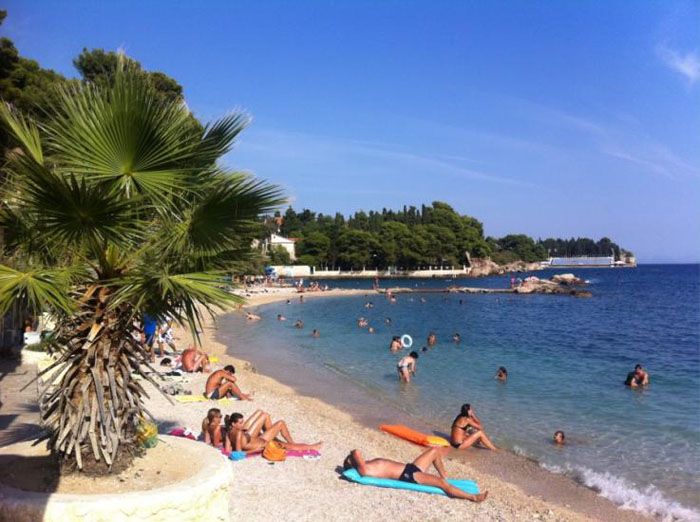
5 Bene
Again, Marjan. This beach is part of recreational centre in the pine forest at the western part of the park hill, with several tennis courts, football field, and even open-air gym. You can reach it by bus, but also walk through the woods, or rent a bike and go there like most locals do. Water is not as clear like on other beaches in this selection, but mostly because of the sandy sea-bed, not because it's polluted in any way. There is a bar and a restaurant right next to the beach, and in case you like some privacy, area around Bene - named after church of Saint Benedict that once stood there - is full of solitary spots.

To find out more about Split, CLICK HERE.
Guardians of Gods and Emperors: All the Sphynxes of Split
Split was founded thanks to a Roman emperor Diocletian, and most of its heritage can be traced all the way to Roman times. However, probably one of top five the most photographed spots in Split has even older origins, ancient Egyptian. Of course, we are talking about Split Sphynxes. The one in front of the cathedral is the best preserved, and definitely the most famous, but there were much more of them scattered around the Palace by Diocletian. What they were doing there, how many of them once existed, and where are they now?
A whole series of Sphynxes were brought to Diocletian's Palace while it was still under construction, and my friend, one of the leading Split tour guides Leo Nikolić believes it was because Diocletian considered himself as a God's given, or son of Jupiter. It was very close to Egyptian pharaohs concept of ruler and God in one person. There was also a practical reason - Egypt was Diocletian's private property, as it was the case with all Roman emperors, and he could have brought anything he wanted from there, at almost no cost. Some things never change. Whatever the reason was, those divinal statues are probably the oldest objects in Split, about 3,000 years old.
As far as we know now, there were at least eleven Sphynxes around the Palace, judging from those who remained, or by the fragments found. After Palace was christianized, like the whole empire, pagan symbols were crushed symbolicaly, but even literally. After all, Diocletian was an arch-enemy for Christians, having them killed by thousands. It was quite expected that every memory on him will be destroyed.
Split Sphynxes always drew travellers' attention, I recently found beautiful photo made by Franz Thiard de Laforest in 1870s. Much before that, Robert Adam drew it as part of his studies of the Palace.
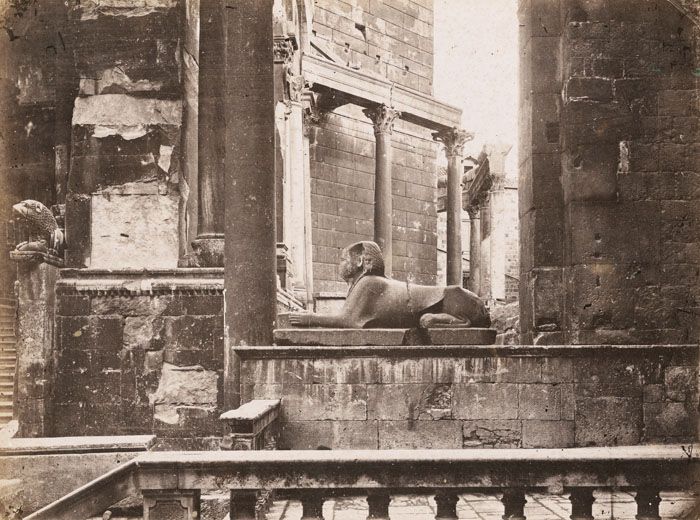
The best preserved Split Sphynx is the one in front of the cathedral, although even this one was cut in half. Still, it's visible in its full beauty, even with hyerogliphs inscription at the bottom. It was probably one of two, or maybe even four keepers of Diocletian's Mausoleum. It was probably brought from some ancient temple in Karnak.
Second one is the one that probably stood opposite from the previous one, and is now in the Archeology Museum after being donated in 1875. by one of Split noble families. This one is a little bit smaller, and made probably around 1,400 BC, maybe for one of temples in Thebe.
Same museum holds several other fragments. For example, back part of the one made of white stone, or head made of red granite found in Salona.
During excavations around Vestibule small black granite Sphynx was found beheaded This one is now in one of the halls of Palace's substructures. There we can also see the small fragment of front legs and chest made of red granite.
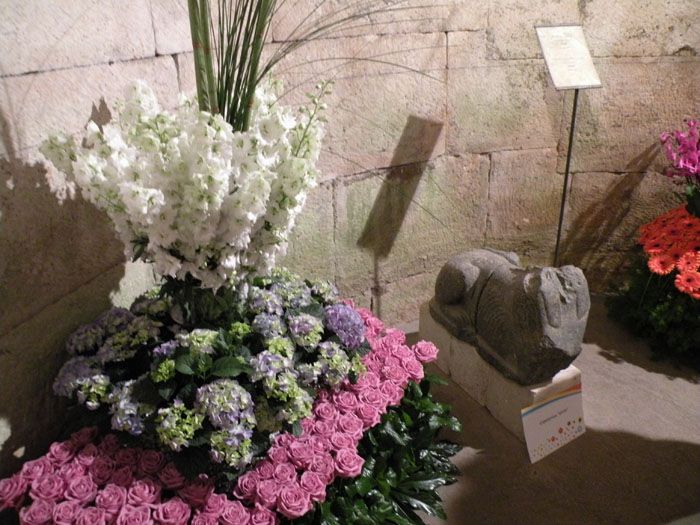
There are some fragments that can be found as part of facades of buildings around the Palace. The most famous is the red granite head near the green part of the Palace, popular "Vrtal", or Garden. However, there is a theory that it was part of some other Egyptian statue.
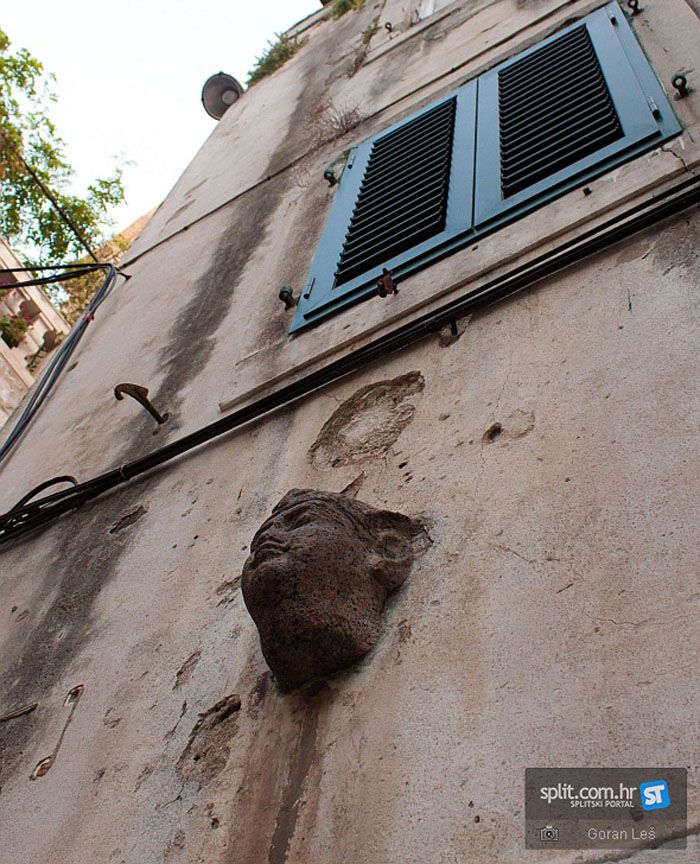
Very well preserved, although without head, is the one in front of the Jupiter's Temple, or baptistry. This one was also found during excavations in the nearby area, and brought to present position for decorative reasons. Split City Museum keeps the one made of grey and black granite, another one without the frontal part. Same museum keeps Sphynx head made of red granite, found during excavations of ancient draining system. There are also some other smaller fragments, like feet, chests, or legs, but it's hard to expect that any other better kept Sphynx will ever be found.
Worshiping For Non-Catholics In Split
Christianity is one of the foundations of Split, and its many churches can witness how faith was important in city's history. However, what to do if you are religious, but not Catholic? Or not a Christian? Where to worship? Here is the brief guide, in alphabetic order.
One of the rare non-Catholic Christian denominations that managed to build their own faith center, on a very good and accessible location. Every Saturday there is a Bible studying at 10 am, and sermon on 11.15. Plus, every Wednesday at 6 pm, they have meetings of Bible Friends Club.
Thanks to activities by pastor Dražen Radman, this small church community is very well present in local community. They have sermons every Sunday at 10 am, and prayer meetings on Wednesdays at 8 pm. For English speakers translation during sermon is provided.
Evangelical Lutheran Church Split
Officially, it's based in Split, but its site is actually in Šibenik. However, they have activities in Split. Since web site is in Croatian only, maybe it's the best to contact them to check, e-mail address is This email address is being protected from spambots. You need JavaScript enabled to view it..
Another small religious community, with a praying site, you can find it here. For more info on activities, phone them on + 385 (0)21 569 766.
Another big and important community in Split, and city's history and social life. Unfortunately, there is no mosque in Split, but to all faithfull a praying site, or mesjid, is available in the city's center. Beside all religious services, there you can also learn about where to buy, or where to eat by hallal principles. In Split, only Turkish restaurant Istah has this certificate.
Jews left incredibly important mark in Split history, and some of the most important city landmarks are connected with their community, like 16th century synagogue, old Jewish cemetery, or Morpurgo bookstore, the third oldest in Europe. Unfortunately, Split doesn't have a rabbi, but it's possible to worship in the synagogue. Of course, Community's excellent web site will give you a detailed insight into a role Jews played and still play in Split.
This center is consisted of temple and a bookstore, and offers a place for meditation. Often are different events, like lectures about Buddhism foundations, and principles. As they say on their web site, it's open to anyone, you don't need to be a Buddhist to participate in Center's activities.
Recently, we wrote about unfinished Serbian Orthodox church of Saint Sava, but this community has a small place of worship, right next to this site. There they hold all services like in any Serbian Orthodox church, in spite of spatial problems. Serbs are the biggest ethnic minority in Croatia, and thus their national church plays an important role in their social life.
This email address is being protected from spambots. You need JavaScript enabled to view it.
Top 10 Things To Do In Split For Free
Split is a tourist city, and as such mostly profit-oriented, especially during the summer season. Still, there are ways to enjoy it for free. This is our selection of freebies, maybe someone else would include some others. Here are alphabetically ordered suggestions.
Beaches
Main rule is this: there are no private beaches in Split, except partly the one in front of Radisson Blu hotel, and the one in Le Meridien Lav Hotel. There are those under concession, where it's possible to rent a seabed and/or parasol. But, if you want to lay down your towel, you can do it wherever you want. And have in mind that Split has about 15 kilometers of seashore line, and most of it - except city port - is suitable for swimming.
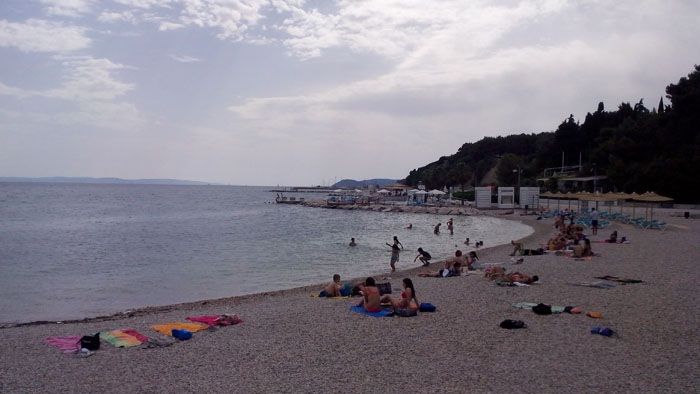
Churches
Unlike some other cities with similar historical heritage, pretty much all churches in Split have free admittance, no matter how precious are some artifacts inside. The only exception is the Cathedral of Saint Domnius, where it's required to buy a ticket for sightseeing of the church itself, treasure and the bell tower. Of course, entrance is free on holly mass, but it's required to respect the service and worshipers. Beside cathedral, our favourite churches are Saint Francis, tiny Saint Martin, and legend-filled Saint Anthony monastery.
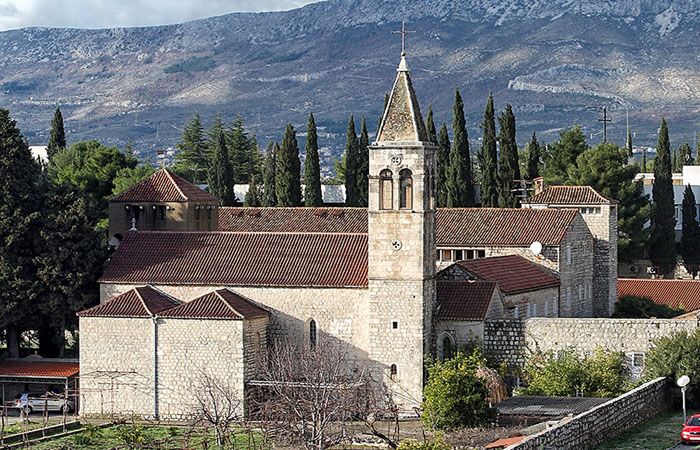
Diocletian's Palace
Centerpiece of Split is its biggest landmark, ancient Diocletian's Palace, not only the foundation of the city, but city itself. Many tourists arriving to Split believe they will find actual palace, a building remained from the Roman times. Of course, it's not so. Browse around the Palace, and enjoy it's hidden corners, tiny squares, alleys and witness centuries-long life within its walls. That's probably the best way to sense the pulse of the city.
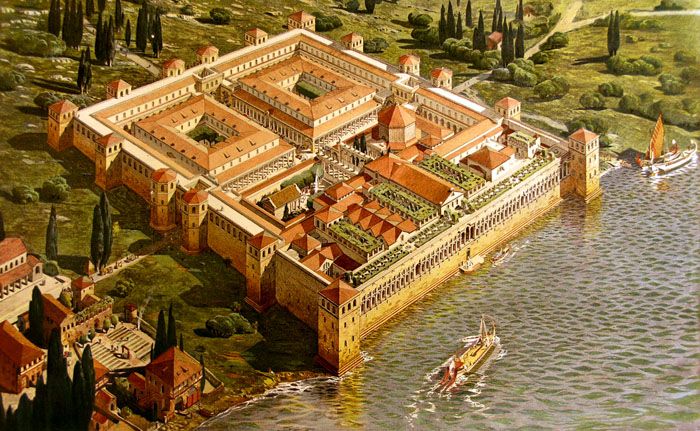
Diocletian's Salute
For some, it can be pure tourist-oriented kitsch, or just a bait for those interested only in commercial interpretation of history. However, during the season every day at noon Peristil is packed full with tourist expecting to see actors playing roles of emperor Diocletian, his wife Prisca and imperial guard and saluting visitors to the Palace. And it's fun, check out this video.
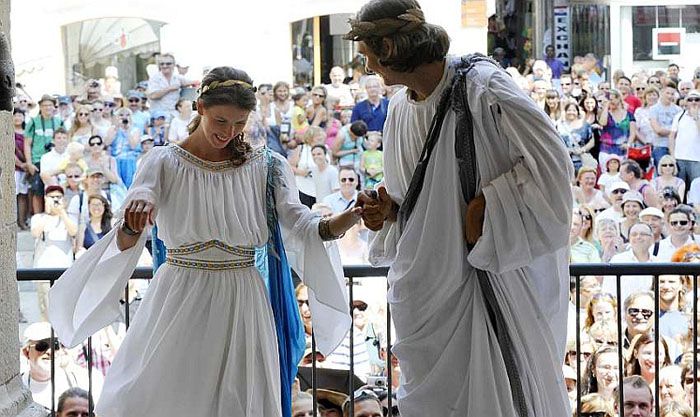
Galleries
All Split museums require paid admission, with different discount rules, but in the same time all art galleries and temporary exhibitions are free of charge. That's the case even when such exhibitions are placed in museum venues. There are several very busy, and attractive galleries, like Milesi Palace, Salon Galic, Photography Gallery, Gallery of the Fine Arts, Gallery Kula, Gallery of Split City Museum, etc. Especially during the Split Summer Festival, there are lots of interesting exhibitions around the city.
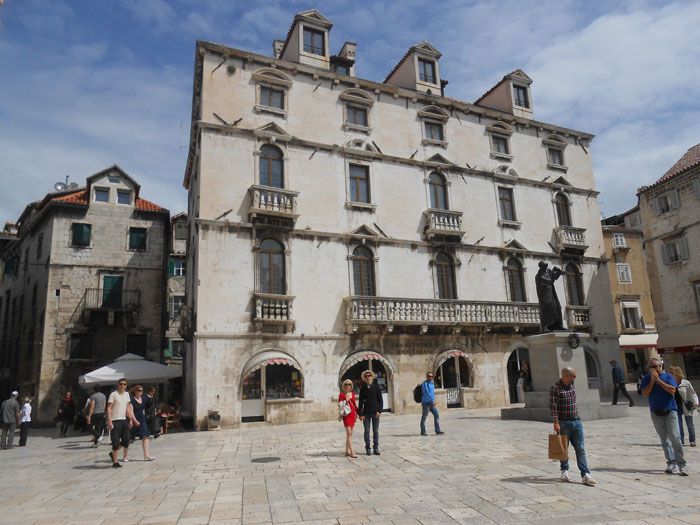
Green and fish market
Word market means that something is on sale there, but nobody will twist your arm if you just browse around the stalls on picturesque Split Green Market (locally "pazar") and 120 years old Fish Market (locally "peškarija"). Every morning dozens of sellers offer everything good of food Dalmatia has to offer, and some of those from beyond local area. Of course, buying some fresh fruit, vegetables or seafood is an investment into your health, so consider this free medical advice.
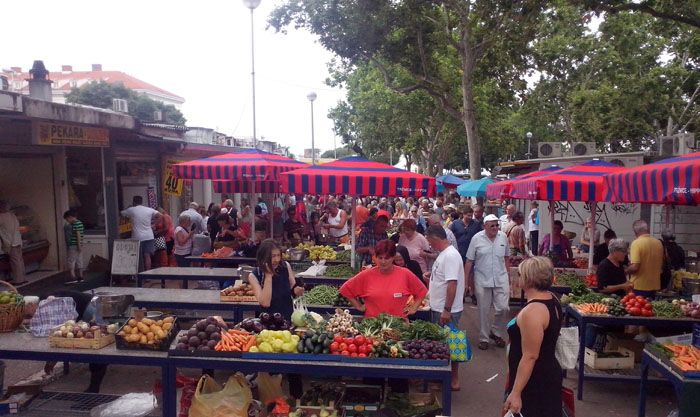
Marjan - hiking, walking, jogging, cycling, swimming, worshiping
That green hill overlooking Split is one of its main symbols, but also its biggest recreational area. There are no many cities with such diversed piece of nature almost in the city center. Unless you rent a bike, everything you want to do on Marjan is free of any charge, but not free of careful behaving, according to the natural and historical treasures it offers. As an introduction and collection of advices, check our series on Marjan (links to previous chapters are at the end of the article).

Mingling at Matejuška
There are many popular bars and clubs in Split, but there is also Matejuška. This old fishermen's cove is one of the busiest night-gathering places, where young tourists can meet their local counterparts, and just make friends with them, and chat while sitting on a long wall in the middle of the city port. In case you still need a drink, there are several stores around where you can buy a beer or three, much cheaper than in bars, and just enjoy in sipping it open-air.
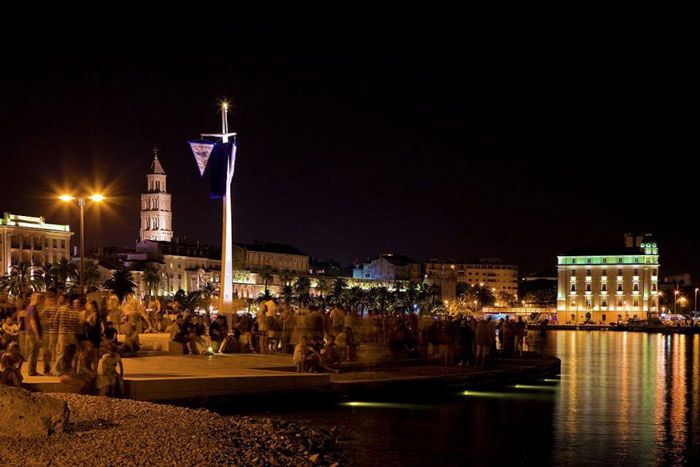
Seaside promenading
Paris has its Seine, Florence has Arno, Cannes has Croisette, and Split has Riva. Excellent choice for evening stroll, before or after the dinner, for enjoying sunset and observing people around you. Promenade doesn't include only main Riva, in front of the Diocletian's Palace, but also newly renovated Western Riva and whole strip from ACI marina to Bačvice beach.

Self-service sightseeing
There are dozens of travel agencies in Split, and maybe even more guidance services. However, those more adventurous self-learning leaning visitors can decide to have a sightseeing tour by themselves, like we recently described here. It's easy, and it's - of course - free. Just follow City light panels around the city center, and all the way to Marjan viewing point, there are 16 of them, map is available here. Good additional assistance can be found in two Tourist Board's Information Centers placed on Riva and Peristil.
